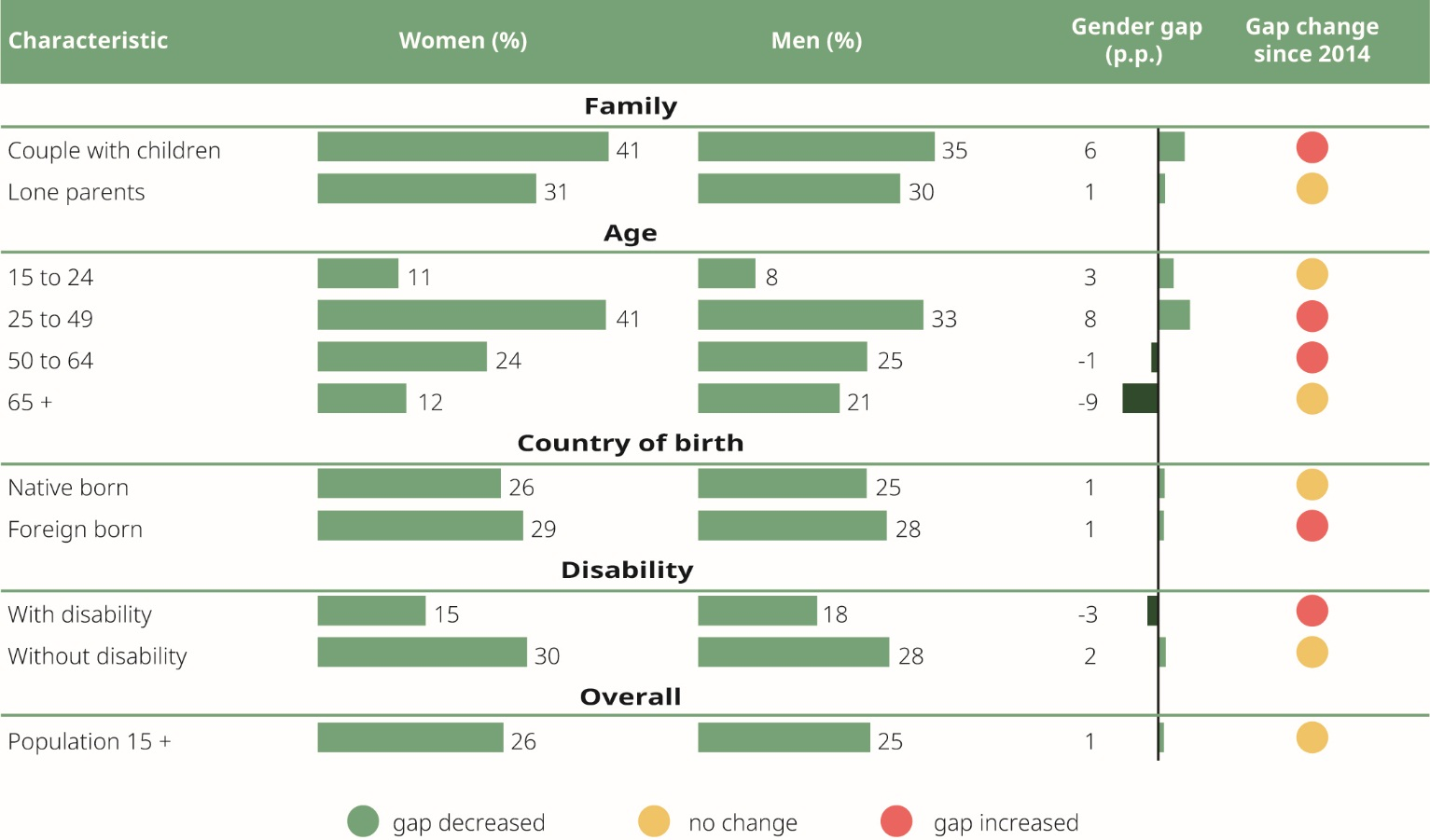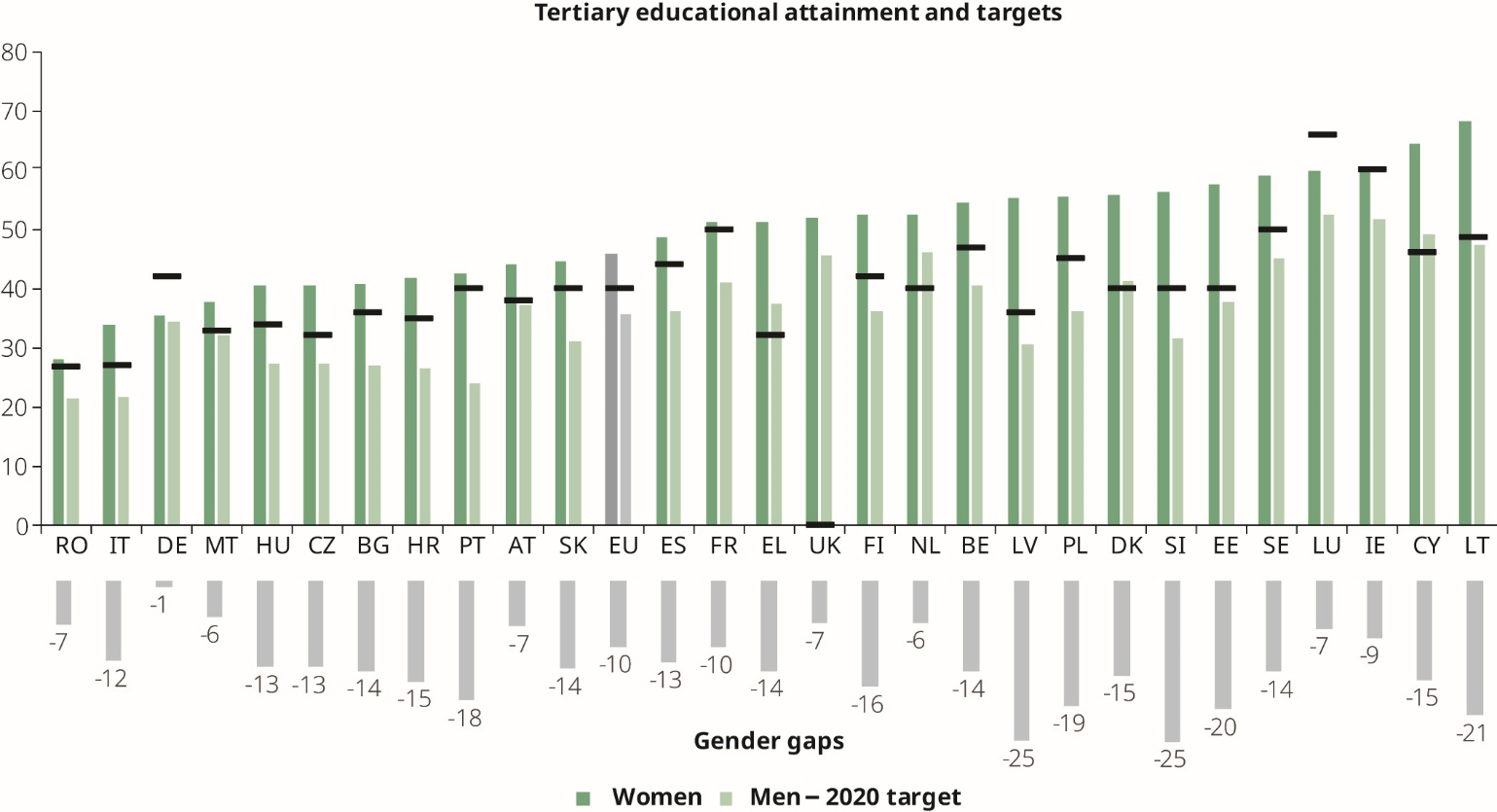Women continue to gradually outpace men in educational attainment
Over the past decade, the shares of women and men graduating from university have increased steadily in Europe, with the gender gap slowly reversing to favour women. In 2010, 20 % of women and 21 % of men had gained tertiary education, while in 2018 more women than men had graduated from university in the 15 or older age group (26 % and 25 %, respectively).
The largest gender gaps in favour of women tertiary graduates were registered in Estonia (17 p.p.), Latvia (14 p.p.) and Sweden (11 p.p.), while an additional nine Member States had gaps higher than 5 p.p. (Bulgaria, Denmark, Ireland, Cyprus, Lithuania, Poland, Portugal, Slovenia and Finland). Men were more likely than women to graduate from university in four countries: Germany (with the largest gender gap of 8 p.p.), Luxembourg, the Netherlands and Austria (all with gaps below 4.5 p.p.).
An intersectional analysis reveals that tertiary educational attainment differs substantially between women and men in terms of age, family composition and disability (Figure 13). More women than men aged 15–49 have gained tertiary education, but the reverse is evident in the 50 + age group. Furthermore, more women than men have gained tertiary education in the couples living with children cohort (+ 6 p.p.).
Meanwhile, an analysis of the intersection of gender and disability found a gender gap in favour of men (3 p.p.). Among people without disabilities, this gap was reversed and stood at 2 p.p. Long-term tendencies suggest that these gender gaps have increased since 2014.
FRA’s second European Union Minorities and Discrimination Survey in nine Member States found that only 16 % of Roma women and 22 % of Roma men had completed upper secondary, post-secondary, non-tertiary or tertiary education. Even among the younger generation (16–24), the shares of graduates from at least upper secondary education remain very low (21 % of young Roma women and 24 % of young Roma men) (FRA, 2019b).
The Gender Equality Index’s indicator on educational attainment is closely related to the EU2020 goal of increasing attainment at tertiary level. The Index monitors tertiary educational attainment in the broader population aged 15 or older, while the EU2020 target focuses on the age group 30–34 and aims to increase the share of the population that has completed tertiary education to at least 40 %.
At EU level, this target was achieved for women (46 %) but not men (36 %). A closer look at national targets – which range from 26 % for Italy to 66 % for Luxembourg – reveals that nearly all Member States achieved their national targets for women but that many fell short of their targets for men (Figure 14).
Figure 13. Graduates of tertiary education by sex, family composition, age, education level, country of birth and disability, EU, 2018
Figure 14. Europe 2020 target – tertiary educational attainment (% of people aged 30–34), EU, 2018

